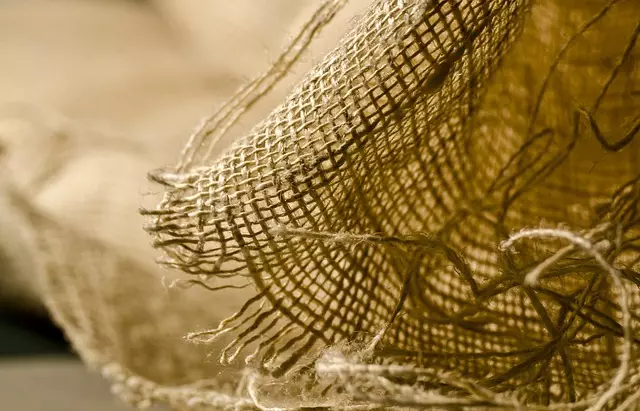Kratom, derived from the Mitragyna speciosa plant, has gained popularity in Nebraska for its natural pain-relieving properties, particularly among those experiencing muscle soreness due to an active lifestyle and challenging climate. Its traditional use in Southeast Asia for medicinal purposes has been embraced by locals in Nebraska who value physical resilience. The key alkaloids mitragynine and 7-hydroxymitragynine within kratom are believed to interact with opioid receptors, providing analgesic effects along with an improved sense of well-being during recovery. Maeng Da and Bali strains are popular due to their distinct benefits. However, users must exercise caution and consult healthcare professionals before using kratom, as it is subject to a complex legal status in Nebraska and has potential side effects and interactions. The American Kratom Association provides guidance on its legal standing, which is crucial for users to navigate responsibly. This discussion underscores the importance of understanding both the benefits and risks associated with kratom as a pain management option, advocating for personal responsibility and an informed approach within the current regulatory framework.
Muscle soreness can be a significant hindrance to one’s physical activities, particularly among those who engage in intense workouts or manual labor. In Nebraska, where the active and outdoorsy lifestyle is prevalent, finding effective relief has become a priority for many. Kratom, a naturally-occurring supplement derived from the leaves of the Mitragyna speciosa tree, has emerged as a potential remedy within Nebraska’s natural relief landscape. This article delves into the mechanisms behind muscle soreness, the efficacy of various kratom strains in alleviating discomfort, and the safety, legality, and ethical considerations surrounding its use. As we explore the role of kratom in Nebraska’s approach to muscle soreness management, readers will gain a comprehensive understanding of this herbal supplement’s potential benefits and constraints.
- Understanding Muscle Soreness and Kratom's Role in Nebraska's Natural Relief Landscape
- Exploring Kratom Strains for Effective Muscle Soreness Alleviation in Nebraska
- Safety, Legality, and Ethical Considerations When Using Kratom for Muscle Soreness in Nebraska
Understanding Muscle Soreness and Kratom's Role in Nebraska's Natural Relief Landscape

Muscle soreness, often a result of strenuous physical activity or overuse of muscles, can be a common issue for individuals engaging in sports, exercise, or labor-intensive work. In Nebraska’s vast landscape where residents lead active lifestyles and the climate demands physical resilience, finding effective relief from muscle soreness is a priority for many. Kratom, a supplement derived from the leaves of Mitragyna speciosa, has gained attention in Nebraska as a potential aid for those experiencing muscle discomfort. Traditionally used in Southeast Asia for its medicinal properties, kratom nebraska intersects with local traditions and contemporary health practices.
Kratom’s role in Nebraska’s natural relief landscape stems from its alkaloid content, which is believed to interact with the body’s opioid receptors, potentially offering pain-relieving effects. The alkaloids, specifically mitragynine and 7-hydroxymitragynine, are thought to contribute to kratom’s analgesic properties, making it a popular choice for those seeking natural alternatives to pharmaceutical painkillers. Users in Nebraska report that kratom not only alleviates pain but also promotes a sense of well-being, which can be beneficial for individuals recovering from intense physical exertion or injury. As with any supplement, it is crucial to approach its use with caution and adhere to recommended dosages, ensuring safety and efficacy in the context of muscle soreness relief.
Exploring Kratom Strains for Effective Muscle Soreness Alleviation in Nebraska

Kratom, derived from the leaves of Mitragyna speciosa, has been a subject of interest among individuals in Nebraska seeking relief from muscle soreness. The plant’s alkaloids, chiefly mitragynine and 7-hydroxymitragynine, are believed to interact with the body’s opioid receptors, potentially offering pain-relieving effects. In Nebraska, where residents engage in various physical activities tailored to its varied landscapes, from the rolling plains to its growing fitness culture, the demand for natural remedies for muscle recovery is on the rise.
When considering kratom strains for muscle soreness relief, it’s important to explore the different types available. For instance, the Maeng Da strain is renowned for its energizing effects alongside pain-relieving properties, making it a popular choice among those in Nebraska who experience muscle fatigue post-exercise. Another strain, Bali kratom, is known for its calming and soothing effects, which may also aid in alleviating muscle discomfort. Users in Nebraska report that the right kratom dose can significantly contribute to recovery and wellness routines. It’s crucial for individuals to consult with healthcare professionals before incorporating kratom into their regimen, as the effects of kratom can vary based on factors such as dosage, personal physiology, and tolerance levels. Kratom’s status and accessibility in Nebraska may also differ from other regions, so potential users should be aware of the local laws and regulations governing its use.
Safety, Legality, and Ethical Considerations When Using Kratom for Muscle Soreness in Nebraska

When considering the use of kratom for muscle soreness relief in Nebraska, it’s crucial to evaluate the safety, legality, and ethical implications surrounding its consumption. Kratom, derived from the leaves of Mitragyna speciosa, has been traditionally used in regions where it is native, including Southeast Asia. In Nebraska, as with other states, the regulatory status of kratom is subject to change, reflecting ongoing debates about its efficacy and potential risks. Users in Nebraska should be aware that while some studies suggest kratom may alleviate muscle soreness and offer pain relief, its safety profile is still under scrutiny by health authorities. The American Kratom Association provides updates on the legal status of kratom, which can vary by state; as of the knowledge cutoff date, kratom is neither fully legalized nor completely banned in Nebraska, existing in a complex regulatory landscape that users must navigate carefully.
Ethical considerations also arise when discussing the use of kratom for muscle soreness relief. It’s important to approach such supplementation with caution and to consult healthcare professionals before integrating it into one’s wellness regimen. The potential benefits of kratom should be weighed against its possible side effects, including dependency and interaction with other medications. Responsible use is paramount, and individuals in Nebraska looking for muscle soreness relief should consider all available options, including traditional therapies and other complementary approaches that are both legal and ethically sound within their community. Kratom nebraska discussions should always include a nuanced understanding of the current regulatory environment and an emphasis on personal responsibility when exploring its use as a natural remedy for muscle soreness.
In conclusion, muscle soreness can be a significant impediment to an active and fulfilling lifestyle in Nebraska. The exploration of kratom as a natural supplement for alleviating this discomfort has presented promising avenues for individuals seeking alternative remedies. As outlined, understanding the role of kratom within Nebraska’s landscape of natural relief options is crucial for those considering its use. The examination of various kratom strains and their potential effects on muscle soreness offers a nuanced perspective on how this plant might be integrated into wellness routines. However, it is imperative to approach kratom with caution, mindful of its legal status and the ethical implications of its use. Prospective users in Nebraska should weigh these factors carefully, seeking guidance from healthcare professionals to navigate the complexities surrounding kratom supplementation effectively.






